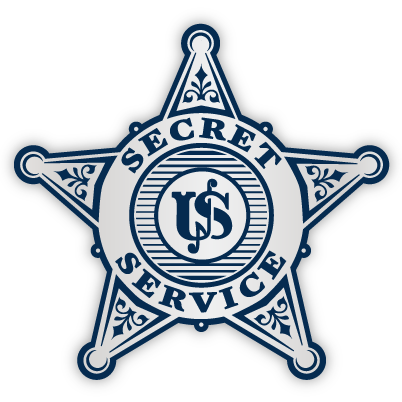
The U.S. Secret Service marks 156 years of service to the nation July 5 as one of the oldest and most storied law enforcement organizations in America.
Director James M. Murray attributed the agency’s longevity to its ability to successfully adapt to constantly emerging threats throughout history, and its focus on training.
“We succeed because the women and men of the Secret Service are driven by a firm and unshakeable commitment to our core values of honesty, loyalty, duty, justice and courage,” Director Murray said. “I’ll add one more – ‘relentless training.’ This is how we remain ready to take on the challenges of a rapidly changing threat landscape for the safety of the American people and the elected leaders we are charged to protect.”
156 years ago today, the Secret Service was born. #SecretServiceBirthday pic.twitter.com/sZ9h0SUAMy
— U.S. Secret Service (@SecretService) July 5, 2021
He added the agency is on the leading edge of combating 21st century crime like the current wave of debilitating ransomware attacks threatening the efficient operation of public and private organizations across the country.
“Through rigorous, ongoing training and advanced research, we remain an essential force in the national effort to protect U.S. and world leaders, and investigate a broad range of financial and cyber-enabled crime,” Director Murray said.
The Secret Service has grown from a small bureau staffed by a few operatives commissioned by the Treasury Department in 1865. President Abraham Lincoln established the Secret Service to suppress widespread counterfeiting, as it was then estimated nearly one-third of all circulating currency was bogus. After the Civil War, the nation needed a federal law enforcement force worthy of the public's trust and confidence to stamp out the rampant proliferation of counterfeit currency threatening to bring down the young nation's financial system.
The Evolution of Our Badges
In 1873, the Secret Service issued its first standard badges to its operatives.
Learn More
After the assassination of President McKinley in 1901, the Secret Service assumed full-time protection duties for the president of the United States.
Over time, this protective mission has been expanded by statutory changes, Presidential Decision Directives, Homeland Security Presidential Directives, National Security Presidential Directives, and various executive orders. Since 1971, the Secret Service Uniformed Division has played a critical role in carrying out the protective responsibilities of the agency. In addition to protecting the White House and Naval Observatory, the Uniformed Division also protects foreign embassies and missions in Washington, D.C. Personnel from the division also staff key units within the Special Operations Division. Only after a rigorous selection process are officers appointed to the ranks of the Counter-Sniper program and Emergency Response Unit.
The Secret Service has leveraged its expertise in protective threat management to become a global leader in targeted violence research. Through the National Threat Assessment Center, the Secret Service has become the foremost expert in the U.S. Government on the prevention and mitigation of targeted violence and shares its findings to make schools, places of worships, and communities safer.
The most recent expansion of the Secret Service's protective mission occurred May 20, 1998, with the issuance of Presidential Decision Directive 62 (PDD 62). PDD 62 established the Secret Service as the lead federal agency for coordinating the development and implementation of security plans for National Special Security Events (NSSEs).

The image of the presidential motorcade is one of the most commonly recognizable symbols of Secret Service protection. View a timeline of the presidential motorcade through the years
Since that time, NSSEs have included major political party conventions; Presidential inaugurations; summits of world leaders; meetings of international organizations such as the United Nations General Assembly; major national and international sporting events; State of the Union Addresses; state funerals; and other events of national significance.
To accomplish both its protective and investigative missions, the Secret Service partners closely with local, state, federal and international law enforcement organizations, which are integral to the agency’s endeavors. Special agents, officers and career professionals carry out their daily duties with these partners on a global scale, primarily through field offices located in the United States, Canada, Mexico, South America, Europe, Africa and Asia.
Today, the Secret Service is a valued law enforcement component of the Department of Homeland Security with more than 7,000 employees operating worldwide. While counterfeit currency investigations continue, the Secret Service has developed an expertise in pursuing savvy malicious cybercriminals operating domestically and abroad as part of transnational criminal organizations. These actors seek to target the U.S. payment systems and prey on communities, the private sector, and financial institutions by committing complex fraud, wire and bank fraud, money laundering, computer network breaches, ransomware and other cyber-enabled financial crimes.
While the Secret Service has adapted to a range of evolving threats throughout its 156-year history of public service, one aspect of the agency remains constant: The credo inscribed on each set of law enforcement credentials issued by the Secret Service, “Worthy of Trust and Confidence,” harkens back to the original foundation on which the agency was built.

